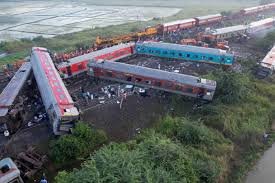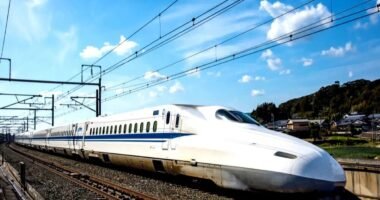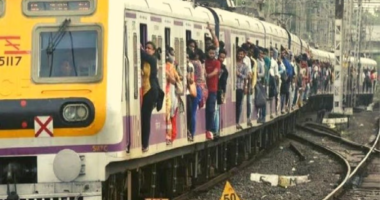The recent revelation of **200 major railway accidents over the past five years** is a sobering reminder of the vulnerabilities inherent in our railway systems. The loss of **351 lives** is not just a set of statistics; it is a litany of personal tragedies and community losses. This blog post delves into the causes, repercussions, and potential solutions to this alarming trend.
Understanding the Magnitude of the Problem
The data showing an average of 40 major accidents annually signifies a pressing issue that demands immediate attention and action. With railways being a critical mode of transportation, especially in a populous nation like India, the safety of passengers should be a paramount concern.
The Human Cost
Each accident not only affects the victims but also leaves a profound impact on their families, altering countless lives forever. The human cost is often overshadowed by the numerical representation, but every number represents:
- Lost potential of individuals whose lives were tragically cut short.
- Emotional and financial hardships for families left behind.
- Psychological trauma for survivors and first responders.
Economic Implications
Railway accidents not only devastate human life but also have significant economic repercussions. The cost of:
- Repairing infrastructure
- Compensation to victims
- Loss of consumer confidence, affecting ticket sales and tourism
constitutes a substantial burden on the economy. This financial strain compels railway authorities and the government to prioritize investments in safety measures.
Identifying the Root Causes
Understanding the root causes of these accidents is crucial in devising strategies for prevention. The primary reasons often cited include:
- Outdated infrastructure: Many railway tracks and bridges are decades old and require urgent upgrades.
- System failures: Signal malfunctions and communication breakdowns between train operators and control stations.
- Human error: Misjudgments or mistakes by railway staff, often due to inadequate training or fatigue.
- Natural factors: Accidents caused by weather conditions such as fog, landslides, or floods.
The Role of Oversight and Regulation
An effective oversight mechanism can ensure stringent adherence to safety protocols:
- Regular audits and inspections of railway infrastructure and processes.
- Implementation of advanced technologies for real-time monitoring and predictive maintenance.
- Revisiting and enforcing standards regularly to cope with increasing loads and modern demands.
Success Stories from Around the World
Learning from global examples can provide the impetus needed for reform. Railway systems in countries like Japan and Switzerland boast exceptional safety records due to their rigorous safety standards and use of technology.
Technological Integration
Implementing cutting-edge technology can significantly enhance the safety of railway systems. Examples of successful integrations include:
- Automatic train control systems that help maintain safe distances and speeds.
- Advanced signaling technology to prevent collisions.
- Real-time data analysis to predict and prevent potential failures.
Training and Development
Enhancing the capabilities of railway personnel through comprehensive training programs is essential. Steps to consider include:
- Regular and rigorous training schedules focusing on safety protocols and emergency response.
- Simulation-based learning to prepare staff for real-life emergency scenarios.
- Promoting a culture of safety where safety concerns are reported and addressed promptly.
The Way Forward: A Call for Action
The urgent need to address this crisis can no longer be ignored. Some actionable steps include:
Investment in Infrastructure
Modernizing the railway infrastructure is non-negotiable. Investments should focus on:
- Upgrading tracks and bridges to handle contemporary trains and increased loads.
- Implementing safety systems such as train protective warning systems.
- Securing rail lines against natural and human-induced threats.
Policy Reforms
There is a need for comprehensive policy reforms that include:
- Greater transparency in reporting and handling of accidents.
- Increased budget allocations specifically earmarked for safety initiatives.
- Involving independent safety experts to continuously review safety protocols.
Conclusion
The rising number of railway accidents, claiming hundreds of lives, is a dire reminder of our collective responsibility towards safety. By addressing the root causes, integrating technology, and reforming policy, we can pave the way for a safer future for all railway users. This transformation requires a collaborative effort between government bodies, railway authorities, and the public to ensure that the **tragedies of the past five years never repeat themselves**.
“`






